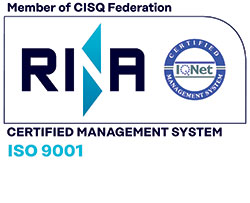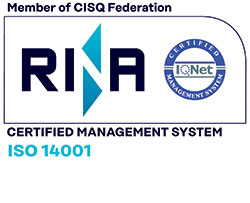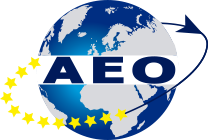URETHANE SPRINGS GUIDE
| Item | Urethanes for heavy loads | High-deflection type urethane foams (porous) |
Low repulsion urethanes |
|||||
|---|---|---|---|---|---|---|---|---|
| H type | M type | S type | L type | Economy type | ||||
| Hardness (Shore A) | 95 | 90 | 80 | 70 | 90 | N / A (foam) | 70 | |
| Catalog No. | TUS•US•USN | EX•QX•EST ESBT•ESU ESUB•A•E•EL LA•C•AX•CX AZ•AZX•UT UTH•UD•UDH |
- | - | AE•LAE•CE AEX•CEX |
PA•PLA | AN•LAN•CNN ANX•CNX•AZN AZNX•UTN UDN |
|
| Tensile strength (N/cm2) {kgf/cm2} |
4511{460} | 4462{455} | 2941{300} | 3138{320} | 2452{250} | 490{50} | 1176{120} | |
| Elongation (%) | 450 | 550 | 500 | 650 | 540 | 250 | 250 | |
| 300% modulus (N/cm2) {kgf/cm2} |
1755{179} | 1304{133} | 931{95} | 372{38} | 1225{125} | - | - | |
| Repulsion elasticity (%) |
23 | 28 | 56 | 51 | 42 | 50 | 6 | |
| Tearing strength (N/cm2) {kgf/cm2} |
1206{123} | 1147{117} | 539{55} | 451{46} | 686{70} | 294{30} | 343{35} | |
| Specific gravity | 1.28 | 1.27 | 1.26 | 1.16 | 1.02 | |||
| Permanent strain (%) * |
26 | 24 | 27 | 25 | 27 | 25 | 1 | |
| Operating environment temperature (°C) | -20~+70 | -5~+80 | -20~+70 | |||||
| Melting point (°C) |
220 | 200 | 180 | 230~250 | 200 | |||
| Embrittlement point (°C) |
-70 | -60 | -45 | -70 | -50 | |||
| Ignition point (°C) | 500 | 450 | 400 | |||||
| Features | Weather resistance | Each type has better weather resistance than ordinary rubber materials. | ||||||
| Water resistance | Can be used even if exposed to a small amount of water. (Cannot be used under conditions of constant water immersion.) | |||||||
| Oil resistance | Can be used even if exposed to a small amount of cutting oil. (Cannot be used under conditions of constant oil immersion.) | |||||||
| Discoloration | Becomes discolored when exposed to ultraviolet rays (including sunlight), however there is no adverse effect on performance. Relatively more discoloration occurs with high-deflection type urethane foams than with other types. | |||||||
| Properties | •Provides the largest load resistance, for better contour forming. •Because of the small deflection amount, this type can be used only for simple forming. |
This type has physical properties intermediate between the H and S types, and can be used for general purposes. | Although the load resistance is lower, the larger deflection amount allows deeper forming. | Although the hardness is equivalent to general rubber materials, this type has superior abrasion resistance and mechanical strength. | Although the load resistance and durability (permanent strain) are somewhat inferior to the M type, the prices are lower. | •Can be used for high deflection (40%max.) and high load applications. •The lateral expansion is about half that of the M type at an equivalent deflection. •Because this type is foamed urethane, it provides excellent heat radiation performance. |
With low permanent strain and excellent shock absorbing performance, this type can deliver antivibration performance. | |
| Applications (reference) |
Machining of thin stainless steel plates or steel plates approximately 2mm thick | Machining of thin plates of materials such as aluminum or brass | •Bulging •Shallow drawing |
•Drawing •Guerin method •Wheelon method |
More suitable for smallvolume production than the M type. | Often used as pad cushions and cam return cushions. | •Vibration proofing •Machining of soft materials such as films. |
|
 The above figures are actual measurements at room temperature 23°C,
and do not constitute guaranteed specifications.
The above figures are actual measurements at room temperature 23°C,
and do not constitute guaranteed specifications. *method of measuring permanent strain (JIS K7312)
1) 24 hours at 70°C with 25% compression
2) Cooled for 30 min. in laboratory at 23°C
3) Strain is measured.
Comparison of urethane springs, coil springs, and gas cushions
 : Excellent
: Excellent  : Satisfactory
: Satisfactory  :
Slightly poor
:
Slightly poor  : Unacceptable
: Unacceptable
| Item | Cost to load ratio | Machinability | High speed endurance | Load stability | Permanent strain | Initial pressure | Operating environment temperatures |
|---|---|---|---|---|---|---|---|
| Urethane springs |  |
 |
 |
 |
 |
 |
 |
| Coil springs |  |
 |
 |
 |
 |
 |
 |
| Gas cushions |  |
 |
 |
 |
 |
 |
 |








